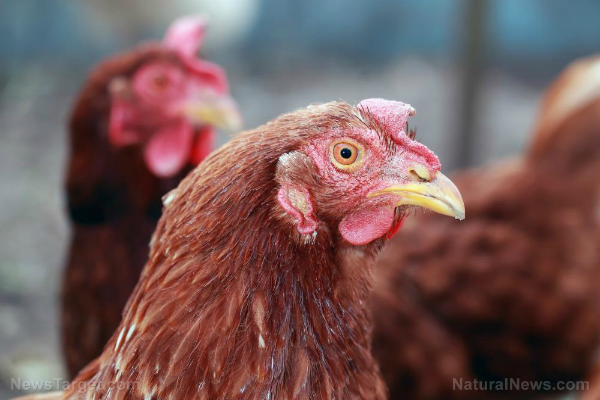Keeping egg-laying chickens offers several benefits. They supply fresh eggs daily, eat insect pests, and make for a steady source of income by selling eggs or meat.
For preppers who want – or need – to raise egg-laying poultry in their homestead, these 10 breeds make excellent choices for backyard chickens. (h/t to TheHomesteadingHippy.com)
Egg-laying chickens for the homestead
When it comes to egg-laying, the White Leghorn is a solid choice. A single hen may lay close to 300 big white eggs annually for three to four years. It doesn’t eat a lot, is an excellent forager, and grows fast.
However, the breed is temperamental. White Leghorns are active, flighty, nervous, noisy, and are quick to get bored.
The Lohmann Brown makes for an excellent alternative. A hen produces around 300 brown eggs every year. It also matures earlier.
This breed is friendlier and more docile than the leghorn. The Lohmann Brown will do well in small spaces. However, it is hard to find one in the United States.
Meanwhile, the Rhode Island Red breed pulls double duty as an egg-layer and a source of meat. This dual-purpose bird actively forages and does well on the free-range.
It is a hardy breed that eats most foods, tolerates most climates, and doesn’t suffer from many health issues. Note that the roosters may behave aggressively with other chickens and humans.
The previous breed gave rise to the Golden Comet. A hybrid that produces 250 to 320 large brown eggs, the Comet is docile, friendly, and tolerates cold climates. It starts laying eggs as early as 16 weeks, rarely gets broody, and also provides meat.
Next is the Plymouth Rock, one of the most beloved breeds in the United States. The dual-purpose chicken lays 280 light-brown eggs each year and handles cold weather well.
Its calm and friendly temperament make the Plymouth Rock great with kids. It is an adept forager that enjoys ranging freely as much as it does staying in the backyard. (Related: Homesteading done right: Chicken droppings composting guide.)
More options for backyard chickens
The Buff Orpington is even more docile than the Plymouth Rock. The big bird is happy to stay cooped up and produces 200 to 280 eggs every year.
It is a poor forager, prefers to eat from a feeder, and needs lots of water and cover. The hens like to sit on eggs and bring up their chicks.
From Australia comes the breed called the Australorp. The hardy bird produces at least 250 large eggs annually and flourishes in any climate.
Easy to raise, the Australorp is calm, quiet, and easy-going. Even the roosters are chill. The breed starts aloof but warms up quickly to the homesteader or prepper.
The Ameraucana lays blue-colored eggs. It belongs to the “Easter Egger” group of birds. They are hardy poultry as long as they stay out of winter drafts, but they are also expensive.
Then there is the Wyandotte, the first dual-purpose breed of chicken bred in the United States. They live for up to 12 years, lay 200 eggs per year, and eat anything. They are broody and protective of their young, and roosters may attack human children.
The last breed for consideration is the Sexlink. The hybrid chicken comes in different colors. Red sexlinks may bully other poultry while black sexlinks are more docile.

Recommendations
The most prolific egg producers are the White Leghorn, Lohmann Brown, and Rhode Island Reds. However, the red sexlink enjoys the best feed-to-egg ratio, while the Plymouth Rock and Wyandottes are the best general breeds.
If you need both eggs and meat, go for Wyandotte and Plymouth Rock. If you want friendly breeds, pick the Buff Orpington and Plymouth Rock.
source : Edsel Cook




